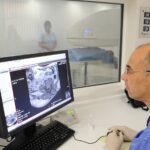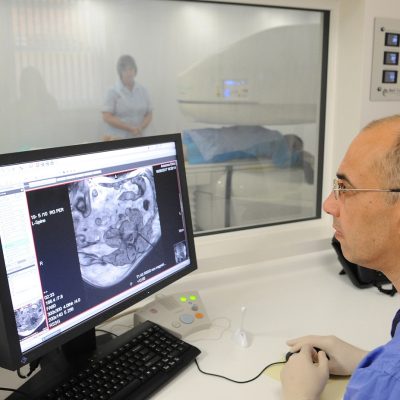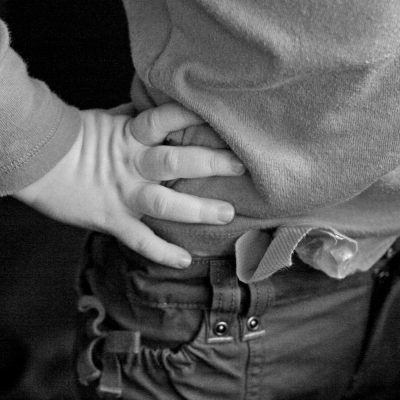Dr Hany Elmadbouh, Clinical Director of Avicenna Clinic explains MRI
Very few patients are thrilled to get an MRI scan, and, honestly, we can understand why. An hour of claustrophobia in a 60cm-wide, tube-like enclosure is not a pleasant thought!
Magnetic resonance imaging (MRI) is one of the safest and most non-invasive ways to see inside the human body.
MRI uses a powerful magnetic field, radio waves and a computer to produce three dimensional detailed pictures of organs, soft tissues, bone and virtually all other internal body structures. It is based on sophisticated technology that excites and detects the change in the direction of the rotational axis of protons found in the water that makes up living tissues. MRI does not use the damaging ionizing radiation (x-rays) unlike CT scans.
The brain, spinal cord and nerves, as well as joints, muscles, ligaments, and tendons are seen much more clearly with MRI than with regular x-rays and CT. For this reason, MRI is often used for sport-related injuries with suspected soft tissue sprain, bone bruise, fracture or cartilage damage. Detailed MR images allow doctors to evaluate various parts of the body and determine the presence of certain diseases and to monitor treatment for a variety of conditions. One kind of specialized MRI is functional Magnetic Resonance Imaging (fMRI). This is used to observe brain structures and determine which areas of the brain “activate” (consume more oxygen) during various cognitive tasks.
There are two main types of MRI machines.
Conventional closed MRIs consist of a hollow, cylindrical structure that patients are sent slowly through. It completely envelopes individuals during a scan. From the narrow bore (often measuring 60 cm) to the tube-like, “buried-alive” enclosure, patient comfort seriously lacks with many closed MRI systems.
Open MRI is a machine that is open on the sides rather than a tube closed at one end, so it does not fully surround the patient. This wide-open design allows patients to look around the exam room or remain near family or friends. It was developed to accommodate the needs of patients who are uncomfortable with the narrow tunnel and noises of the traditional MRI and for patients whose wide shoulders or weights make the traditional MRI impractical. There are two configurations for open MRI. One where the patient is positioned between two vertical poles (standing) and the other lying between horizontal poles (lying). Only the lying open MRI allows patients to be accompanied by a holding-hand friend and family member and also the one that is used for targeted image-guided intervention such as for pain management injections into the spine, joints and soft tissues.
Avicenna Clinic houses the only Open MRI in the East of England, in addition, a state-of-the art ultrasound and X-ray scanning equipment. The clinic offers a one stope same day appointment to a range of specialist consultants for fast diagnosis and tailored treatment planning.
To book a consultation or for more information on treatment and explore the other available services to help you, contact Avicenna Clinic on 0330 202 0597.
BENEFITS OF AN OPEN MRI
- Ideal for individuals with claustrophobia
- Can accommodate patients of large physical stature as well as patients with wide shoulders who may not fit traditional machines
- A good option for children and teens
- Also good for people who do not want to be alone during the test. A person with dementia can have their spouse in the room. A small child can have their parents
- Allows for additional specialty testing because the Radiographers can better position the patient to capture accurate images.
Latest Blogs
Can we put a price tag on our health?
With back pain being the most common cause of long...
Read More











